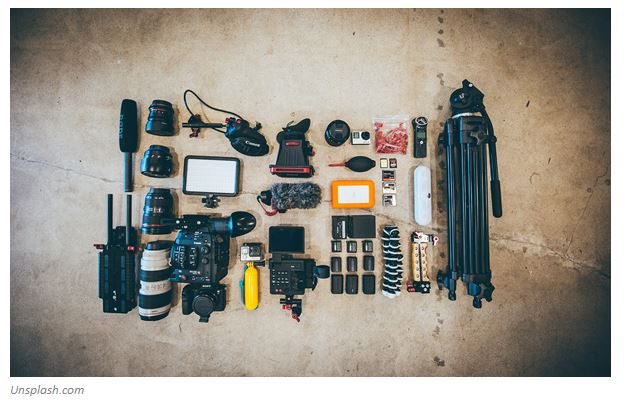
A presentation to the Brand Forum earlier this year, Ciaran Quilty of Facebook demonstrated that not only has the world of media been transformed; the entire world of business has been turned upside down. He cited the example of Uber, the world’s biggest taxi business who own no cars and Airbnb, the world’s biggest hotelier who own no real estate as examples of how digitally empowered internet based businesses are revolutionising the established order. We were shown how the tools of the internet and social media have made it possible to track, test, iterate and improve marketing so that even the smallest player can compete on a global scale.
Understanding how the media landscape has changed; in particular the emergence of mobile as the primary medium and the growth of video as the primary content. More people all over the world now own a mobile phone than a toothbrush and the growing dominance of mobile is dramatically illustrated by the fact that whereas five years ago 90% of internet traffic was accessed through a laptop and 10% through mobile, today the position has been almost completely reversed; 70% mobile and 30% desktop. If the old media world was dominated by issues of coverage and frequency; what proportion of the population could you reach and how often did you need to deliver a message, today’s imperatives are engagement and targeting. The growth and the importance of video marketing are linked to the growth of consumers accessing the internet to help them navigate daily life. Video across all media channels has emerged as an even greater opportunity for brand owners to promote brands and to interact with consumers in a targeted way.
The video landscape is thriving and the future of video to promote a brand is bright. 2017 Video will represent 69% of all consumer based web traffic. More videos are watched on YouTube than facebook, but Facebook is great for granular targeting. Peak viewing times for video is the late night and early morning, with 18-24-year-olds driving this usage. Over 50% of videos published by the top 100 global brands got fewer than 1,000 views.
However, it is very hard to get video content seen. 10% engagement (including likes, shared & comments) on YouTube is regarded as successful. How you seed your video is important, but putting the effort into optimisation is key. It is also worth concentrating your efforts on one or two platforms and ensuring formats for both desktop and mobile are optimised. Twitter having low video penetration amongst consumers but is a key platform to target media (journalists and influencers).
To promote recipe videos, Bord Bia’s Brand Forum ‘workshopped’ best practice in video optimisation. The recommendations are summarised below as eight commandments:
Number 1 Commandment: Identify your objective and how they will be measured? Ensure objectives are linked to overall brand objectives.
• Awareness – reach / video views
• Engagement – Likes, shares, comments & feedback on YouTube / fb, number of posts on blogger web sites etc
• Brand Love – Advocacy & subscribers
Other: Content quality, dwell time & advocacy.
Number 2 Commandment: Who is your target audience? Where are they, when, what content do they like and what do they not like? Targeting is key to success. Who will bring my brand the most revenue?
Number 3 Commandment: Why would I care and why should I share? Understand the type of content you need. Is it content to drive brand love and affinity? What’s the consumer benefit? What value does it bring? How useful is it to your consumers? Should the content be functional? Is it relevant to their lives? is it something they need or want to know? Can it help define your brand?
Number 4 Commandment: Understanding your platforms and create the right formats. There is no point putting a TV ad on youtube, it’s made for TV. What formats do you need to best engage with consumers on the platforms – gif, canvas ad on mobile, etc?
Number 5 Commandment: Ensure your video is not stand alone content. You should start to build a video strategy and ensure videos link to one another to build your brand story. One video won’t deliver long-term results for you. And they don’t always have to be high production value either, (but be careful here). Look at creative cut downs, search copy, posts copy & links, and other content to help tell the brand story or Product benefits
Number 6 Commandment: Get your video ready for amplification, including where you want your consumers to go, do, post & / view. Keep up to date with best practise tips by going direct to source, ie YouTube and Fb. Constantly Ensure the timing if your video is apt (20-40 seconds on FB). Help consumers find your video: Title Description tags. Use annotations to make your video work harder. Instant impact – you have less than two second for someone to notice your thumbnail, e.g. Jamie Oliver’s food tube has an immediately recognisable brand identity. The shorter the better – 20 seconds is optimum, then send consumers to your web site or YouTube channel for the full recipe. And don’t forget what device you want to push your content on (so mobile or Desktop or both?)
Number 7 Commandment: Follow an efficient amplification process. Owned: Exhaust your own channels first. Earned: Leverage any influencers. Shared: What partners can you build alliances with? Paid: If you want to reach consumers you have to put some paid behind your video.
Number 8 Commandment: Once live, you need to optimise. Look at your analytics, make changes based on those analytics (search, format, annotations etc – linking back to your objectives). Don’t wait until your campaign is over.
Some interesting facts:
• Age defines behaviour, with 35-44-year-olds consuming most video but 10-24-year-olds have the highest click through rate at 14%
• Twice as many people watch 100% of video ads on YouTube compared to 25% on facebook.
• Instagram recently surpassed 500 million users, 400 million of whom are active users. It’s the number one social platform for American teens. 80% of Instagram users are outside the USA.
• Females click on video ads more often than males.
• 33% year on year increase of digital videos are viewed on a smartphone.
• The top brands are maturing on YouTube, producing better videos, that amass more views, attract more subscribers and generate higher engagement (22 hours on average of online videos watched per week). Reference – Pixability insights 2016.
• However even with paid support, less than 80% of Brand videos get less than 10,000 views on YouTube.
• For some best in class food & drink video content: Tasty “Food that’ll make you close your eyes, lean back, and whisper yessss. Snack-sized videos and recipes you’ll want to try”.
Source: Bord Bia – The Growth of Video & How to Optimise Your Video








